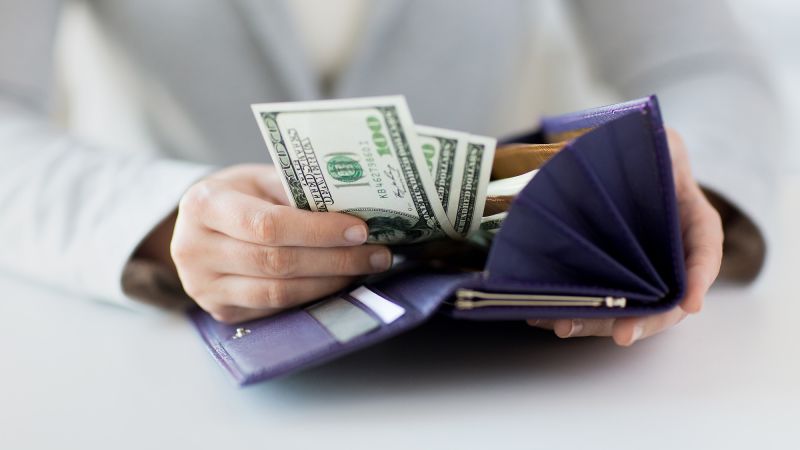As the tax season comes to a close, it’s a moment worth celebrating for those who have successfully completed and filed their tax returns. This sense of achievement is heightened for many, as the majority of U.S. taxpayers often find themselves on the receiving end of a tax refund, and this year is no different. Reports indicate that, as of early April, the Internal Revenue Service (IRS) has dispensed over $211 billion in refunds to nearly 68% of individuals who submitted their tax returns. The average refund amount for taxpayers stands at approximately $3,116, a figure that underscores the commonality of receiving money back from the federal government each tax season.
With a commendable refund in sight, it becomes essential to pause and critically assess the most sensible ways to utilize this financial boon to enhance your overall economic standing. Given the unpredictability of economic conditions, particularly in light of recent fluctuations in the U.S. tariffs and other pressing financial matters, approaching the application of this refund requires both strategic thinking and a sense of security. Financial experts unequivocally emphasize that a critical priority should be the reduction of high-interest credit card debt, which can significantly hamper financial health.
The average interest rate on consumer credit cards currently hovers around 20.09%, according to Bankrate.com. This figure translates to an impressively high, risk-free return when one addresses existing credit card debt. Greg McBride, a noted financial analyst, highlights that by paying off high-interest debt, individuals effectively secure a guaranteed return on their investment equal to their interest rate. For those juggling multiple credit cards with varied interest rates, the advised strategy is to systematically eliminate the highest rate debt first.
However, Dan Bennett, a certified financial planner at Lake Water Advisory, suggests that emotional considerations may accompany financial decisions. While it’s mathematically prudent to tackle higher-rate debts first, there can be merit in using a tax refund to pay off a smaller balance first, as this approach can provide a psychological win and boost an individual’s sense of accomplishment. Yet, Bennett cautions that this should only be considered if the interest rate on the smaller debt is not much lower than that of the larger debts.
In different scenarios, if your tax refund significantly decreases your credit card debt but fails to eliminate it entirely, exploring options for a zero-interest balance transfer card could be beneficial. This option can grant you a breathing space of up to 21 months, allowing you to methodically repay any residual debt without accruing further interest. Moreover, assessing your current cash reserves for emergencies becomes a priority. Ideally, setting aside three to six months’ worth of living expenses, or up to a year if you’re self-employed or the primary income provider for your household, serves as a protective financial cushion.
Building upon the idea of emergency savings, Jody D’Agostini, a certified financial planner from Falcon Financial Group, advises that in volatile job markets, one might need to extend savings goals to nine or twelve months’ worth of expenses, especially if one works in industries heavily tied to federal contracts or lacks job security. As it fortifies your financial future, your tax refund could play an instrumental role in attaining these emergency funds.
It’s also noteworthy that emergency savings can actively earn interest when placed in high-yield savings accounts, money market mutual funds, or CDs, currently yielding rates between 3.8% and 4.5%. This provides a dual benefit of financial safety and growth in real terms. As McBride stated, such savings can serve as a destination to aspire toward, with refunds propelling individuals closer to that financial goal.
Considering the multifaceted nature of personal finance, it’s essential to recognize that competing financial goals can coexist. An average refund might provide the perfect opportunity to address multiple objectives simultaneously—such as paying down debt, bolstering emergency savings, or tending to essential maintenance on your dwelling or vehicle.
Furthermore, if you find yourself in a stable financial situation—having no credit card debt and adequate emergency reserves—using your refund for necessary purchases may be prudent. With potential price inflation from the current tariff situation hinted at possibly impacting consumer prices in the coming summer, it may be wise to expedite the purchase of durable goods that may become more expensive later. Making strategic pre-payments on essential expenses such as insurance can help bolster a sense of security and confidence in times of uncertainty and variability.
Ultimately, the thoughtful use of tax refunds can lead to improved financial stability, whether through debt reduction, savings, or proactive purchases. Balancing immediate needs with long-term strategies will ensure that you’re prepared for whatever financial demands lie ahead.



